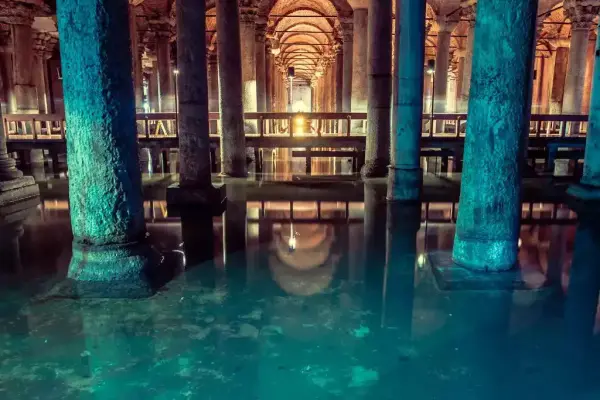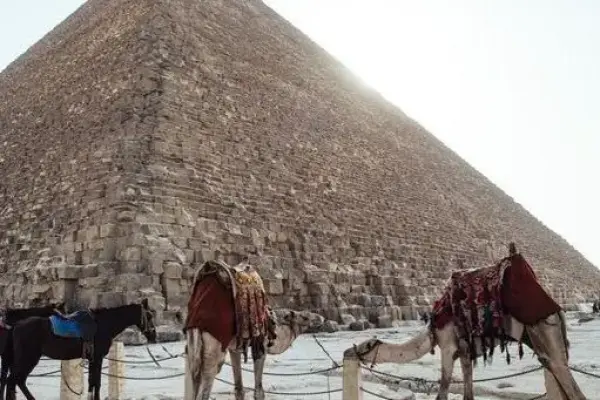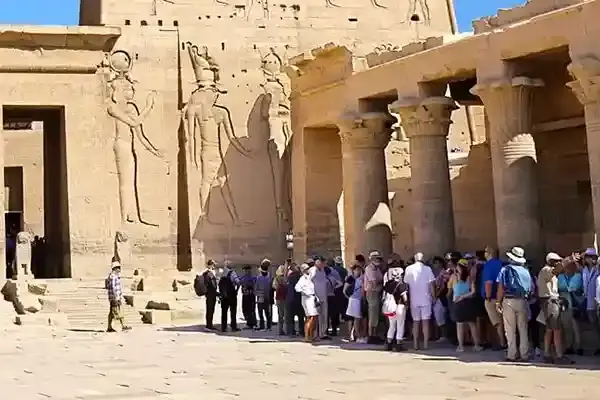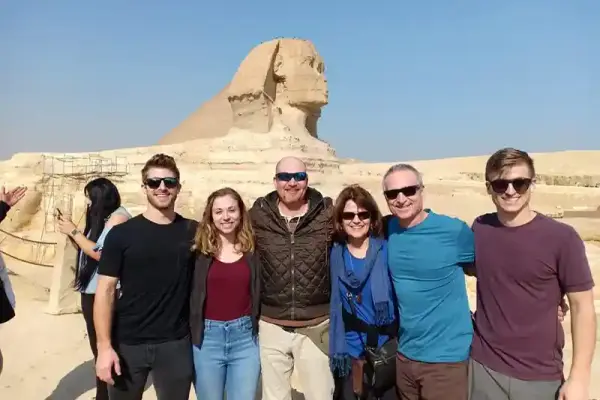Ancient Egyptian monuments and architecture constitute a great heritage that the world is proud of today. From towering pyramids to huge temples, ornate tombs, historical cities, and symbolic obelisks, these buildings reflect the ingenuity of ancient Egyptian engineers and artists. These monuments embody the story of a great civilization pioneered in engineering, art, religion, and politics. Architectural achievements of Ancient Egypt continue to impress visitors and scientists and remain an inexhaustible inspiration and admiration for all of us.
Table of contents [Show]
- The Features of Egyptian Architecture
- Life of the ancient Egyptians
- Ancient Egypt Architecture Types
- Famous Buildings of Egypt Architecture
- Architectural Achievements of Ancient Egypt
- Ancient Egypt Architecture Influence
- Characteristics of Ancient Egyptian Architecture
- Ancient Egypt Architecture Techniques
- Ancient Egypt Architecture Achievements
- Interesting Fact about Ancient Egyptian Architecture
- How did ancient Egypt architecture influence modern-day
- Summary
- FAQs
The Features of Egyptian Architecture
Ancient Egyptian architecture has been characterized since its oldest decades by the simplicity, magnitude, and greatness that make us feel strong and stable. This spirit of simplicity is reflected in the pyramids of Giza, the Saqqara pyramid, and the Temple of Abu Al-Hol. This simplicity has been mixed with beauty and compatibility simultaneously.
Ancient Egyptian architecture is known for its own style, which has been greatly influenced by the country's geographical nature, geological nature, and climate as well. In addition, the most important factors influencing the art of ancient Egyptian architecture are the religious aspects of Egyptians since the dawn of history.
Egyptian architecture has been clearly influenced by these factors in walls, as have many of the most important buildings of the pharaohs, such as pyramids and terraces, in addition to the use of the old Egyptian bass, papyrus stems, palm trunks, and straw.
Maybe like: Strange Facts About The Pyramids
Life of the ancient Egyptians
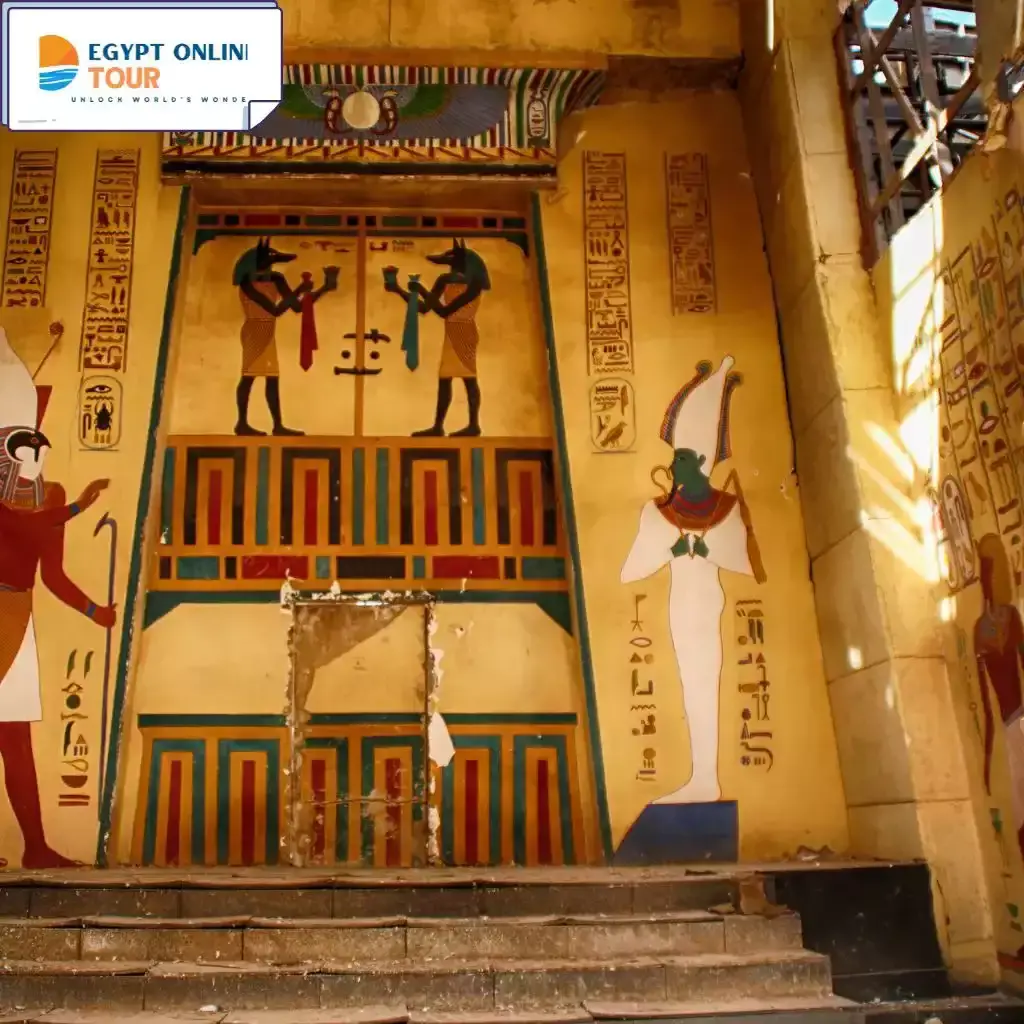
Ancient Egypt is one of the most important African civilizations that emerged about 5,000 years ago and lasted for more than 2,000 years. The Nile River is its center; it provided fertile land on its banks and gave farmers the opportunity to grow crops, and the Nile River was the main transport vehicle for ancient Egyptians to transport goods and move around.
Ancient Egypt was known for its giant pyramids, which were built to bury its pharaohs, and ninety pyramids still exist on the River Nile until today.
Ancient Egyptians
Most of the ancient Egyptians lived on the River Nile, had dark skin and black hair, and were ruled by a king nicknamed Pharaoh, who was appointed by a number of ministers. Egyptians were divided into three social classes; The upper class of pharaoh and his family, rich landowners, clergy and doctors, the middle class of traders and craftsmen, and the lower class of farmers and workers.
Take the chance and learn about the Grand Egyptian Museum Tour .
Religion
The ancient Egyptians worshipped many gods who lived in statues made specifically for them, the most important of which was the God of the Sun. They worshipped him and claimed to send them the good crop, and believed in life after death. They mummified their dead to protect them from degradation and then put them in the graves and put their clothes, jewellry, and food, which they used in their daily lives with them, in the grave for fear that the dead would need it in a life after death.
Work
Despite the lack of rain in ancient Egypt, agriculture was one of the most important sectors of work because of their dependence on the Nile River. The most important crops grown by ancient Egyptians were wheat and barley, and there were craftsmen and fabrics, jewelry, furniture, bricks, and pottery makers.
It will be exciting to know: What Did Craftsmen Do in Ancient Egypt?
Dress Up
According to Egypt's hot atmosphere, old Egyptians wore light cotton clothing that later evolved into more colorful, as well as shaved their head hair and wore wigs.
Sometimes they wore papyrus sandals, and the rich were decorated with gold and silver jewelry and bauble.
Education
The rich ancient Egyptians had the opportunity to learn. They learned writing, reading, and mathematics to become King's writers, while the majority of boys learned agriculture and crafts, and the majority of girls learned household chores from their mothers.
Ancient Egyptian writing consisted of paintings and complex forms that later evolved into symbols, but were used for religious writings or only to write on the walls of buildings because of their difficulty.
Take a look at: the Egyptian Empire Time Period
Ancient Egypt Architecture Types
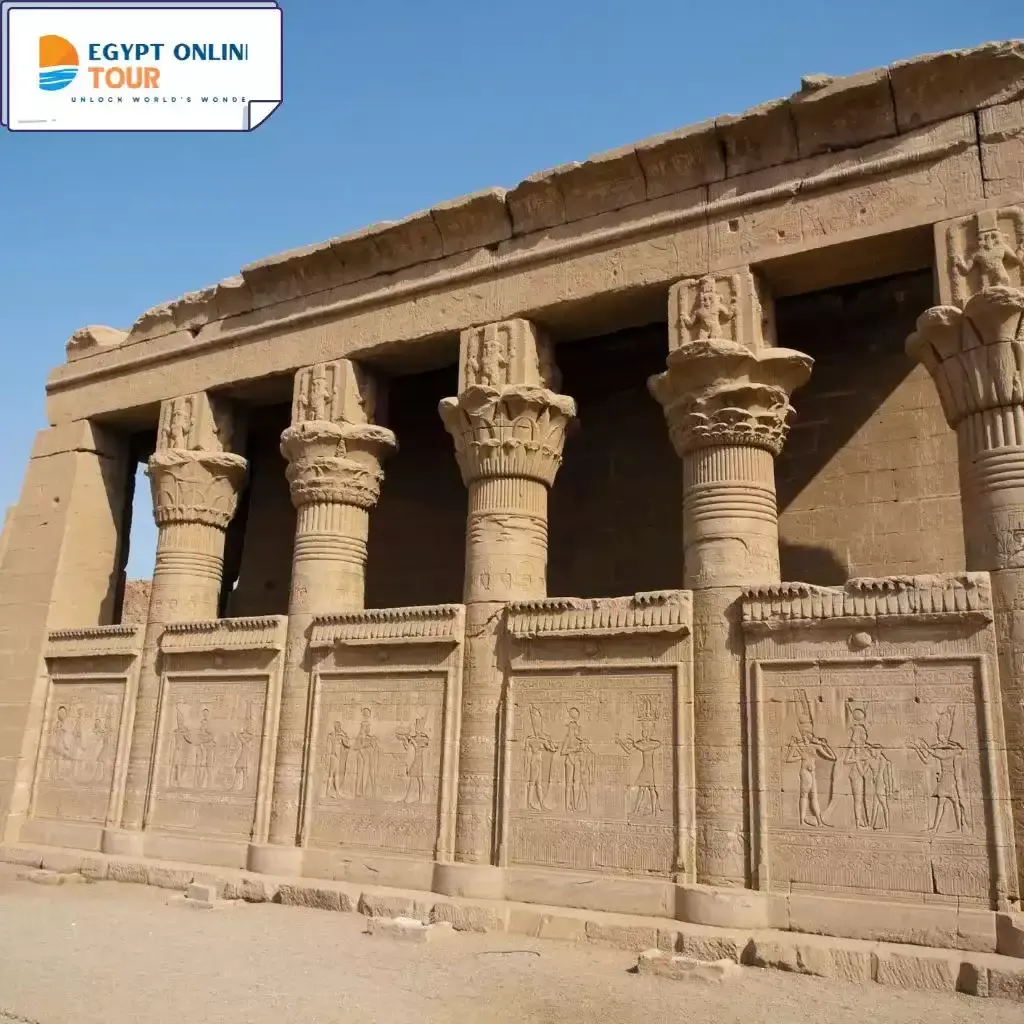
The architecture is divided into three types:
Architecture for life
Cities, mansion architecture, individual' homes, dams, and forts.
Religious Architecture
They include temples of God, and at first these temples consisted of a door facade, It opens to a wide lobby connected to seven halls, and all these old temples are destroyed. There are two other types of religious temples, including temples as flat as Amun's Grand Temple. Other temples carved by the mountain, such as Abu Simbel Grand Temple.
What about 8 Days Cairo to Abu Simbel and Back Overland ?
Funeral architecture
Funeral architecture is about the other life. It is the architecture that handled graves, pyramids, and terraces. It is a pyramid construction that has a small door above the ground. At the bottom of the underground burial room, the room is surrounded by stone and connects to the upper building by a well. One of the most beautiful terraces was Mastaba of Ti in Saqqara.
After the terraces, pyramids appeared, expressing identical terraces. The first was the Zucer Pyramid in Saqqara, and it was composed of 6 layers. Then the shape of the pyramid evolved into the shape that we see today. The entrance to all the pyramids was in the middle of the northern side of the pyramid. Most of them were constructed in the desert west of the Nile, and the walls of the burial room were adorned with texts of hymns and instructions called pyramid texts.
Read more: What did Hatshepsut do
Famous Buildings of Egypt Architecture
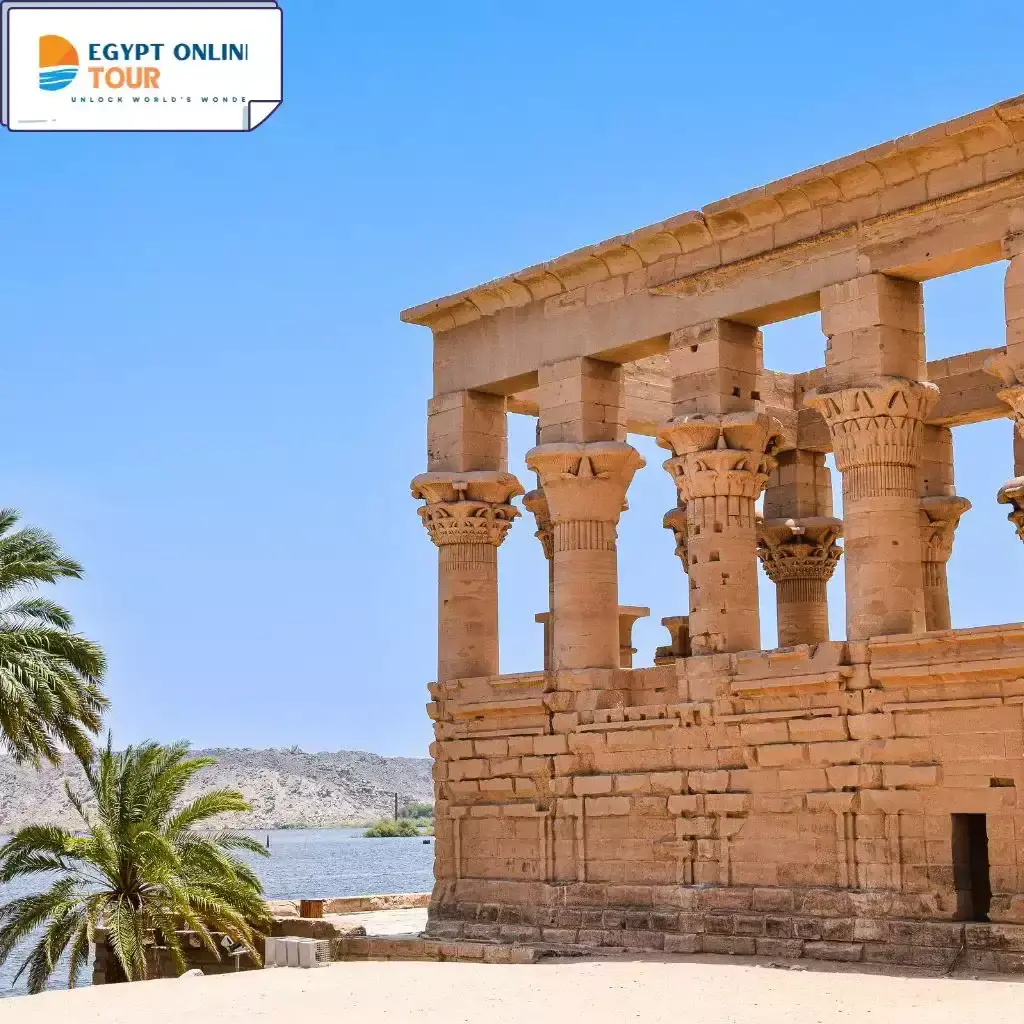
Ancient Egyptian architecture usually is closely associated with the pyramids of Giza. But there were a lot of Egyptian architectural buildings.
Great Examples of Ancient Egyptian Architecture
The funeral temples
The spread of funeral temples began in the era of the Central State and the 12 family kings created the most famous temple ِas the temple of "Labrant" which was built by King "Ammanhat III" in Hawara near Fayoum.
Pyramids of Giza
The Pyramid of Khufu, or the Great Pyramid, in Giza, is one of the world's seven ancient wonders. Its original height was about 146.6 meters. It is designed with amazing geometric precision. The construction of the pyramid aimed to be a cemetery of King Chef, reflecting the religious and cultural spirit of the ancient Egyptians, who believed in resurrection and eternal life.
In addition to the Pyramid of Khufu, there is the Pyramid of Khafre and the Pyramid of Menkaure in Giza. These pyramids reflect the evolution of funeral architecture over time and highlight the technical skills reached by the ancient Egyptians.
If interested in visiting the Pyramids of Giza, you will need to read the comprehensive guide: Egypt trips to the pyramids | The comprehensive guide
Karnak temples in Luxor
Karnak temples in Luxor are one of the largest religious complexes in the ancient world. These temples are characterized by their huge gates, enormous columns, and beautiful inscriptions depicting the triumphs of kings and religious rituals. The Karnak complex consists of several temples:
The Temple of God Amun Ra, was an important religious and political center.
The Temple of Luxor is located on the east bank of the Nile River in the city of Luxor.
The temples were built chiefly during the reign of kings Amenhotep III and Ramses II. It is characterized by its huge building and inscriptions that reflect the religious rituals and daily life of ancient Egyptians.
Abu Simbel has two large temples carved into the rock on the shores of Lake Nasser. The two temples were built during the reign of King Ramses II, and the Great Temple is characterized by its four huge statues depicting Ramses sitting on his throne. The two temples are a symbol of power and greatness during Ramses II's reign.
The Valley of the Kings in Luxor is the site of the burial of kings from the 18th to 20th dynasty. The valley contains more than 60 cemeteries, the most famous being Tutankhamun, which was discovered in 1922. These tombs were characterized by their inscriptions and drawings depicting kings' journeys to the afterlife.
Maybe you like: 5 Days Cairo to Luxor Tour Packages
Architectural Achievements of Ancient Egypt
The ancient Egyptians excelled during their successive monarchies in the covenants of the Old State, the Middle State, and the modern State in engineering and architecture, building their homes, paved roads, fortresses, and castles. They built pyramids and temples that included columns, obelisks, and soul, and helped them in their practice and ingenuity in numeracy, engineering, and architecture.
The pyramids are the most famous symbol of ancient Egyptian civilization, where the word "pyramid" was synonymous with Egyptian civilization in the minds of modern-day people. The Pyramids of Giza remain thousands of years after their construction, remarkable relics that combined knowledge and skill.
The Egyptians excelled in the art of architecture and their immortal monuments are a testament to this. In the Old State, terraces and pyramids were constructed, representing funeral buildings. The first pyramid built was the "Zoser Pyramid", and then the "Maidom Pyramid", all of which were known as the three pyramids of the Giza Pyramid.
It is the time to discover Egypt Luxury Tours .
Ancient Egypt Architecture Influence
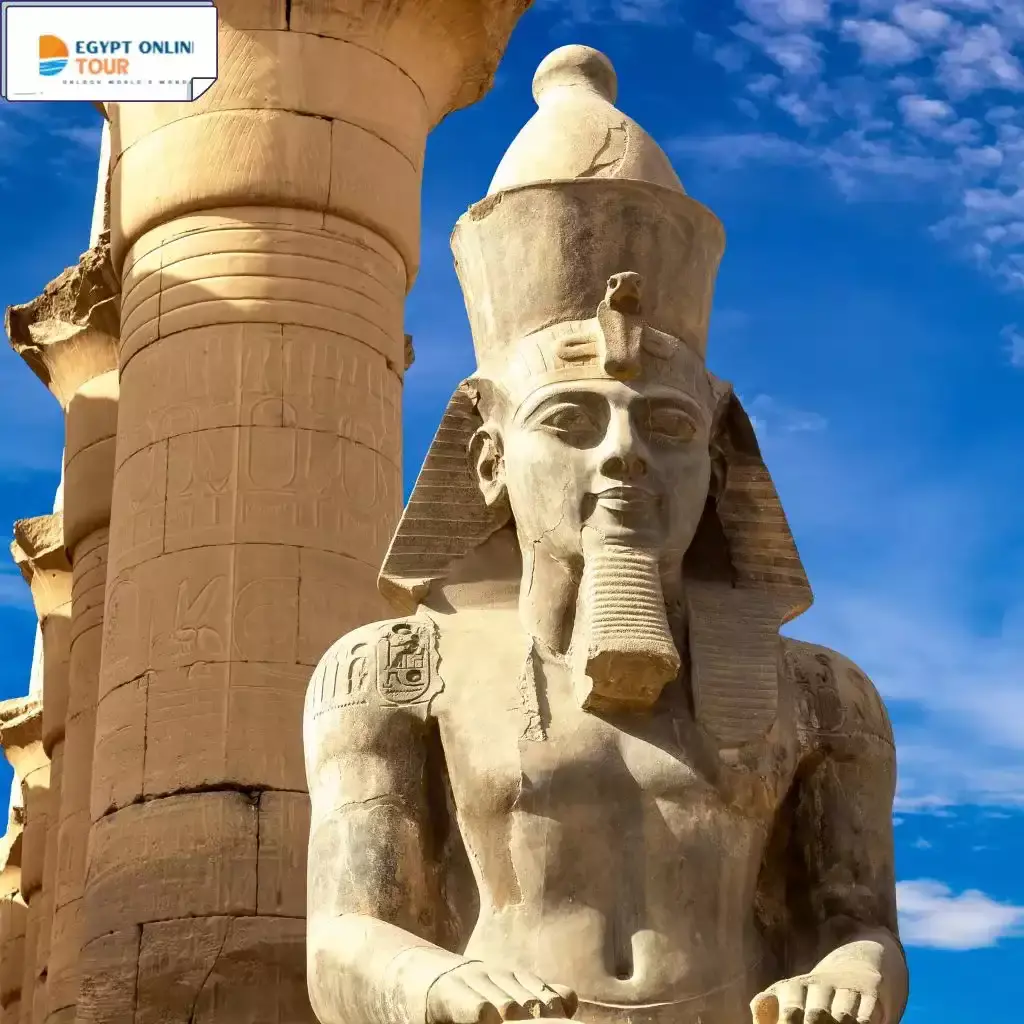
Ancient Egyptian architecture is important because it is similar to figurative art, which aims to preserve forms and conventions that reflect the perfection of the world at the first moment of creation and embody the proper relationship between humans, the king, and the pantheon.
The symbolic art of ancient Egyptian architecture found in buildings, palaces, and temples, played an important role in their culture. Common images and symbols formed the basis and influenced all other types of Egyptian art. They were believed to protect from evil in this life and the afterlife.
Egyptian architects had great respect for their gods and spent thousands of years building buildings dedicated to them. Because of their dedication to building for their gods, we can visit these sites that still exist today.
Don’t miss this opportunity if you plan to visit Egypt: explore Egypt tour packages
Maybe like: Did Thoth Built The Pyramids
Characteristics of Ancient Egyptian Architecture
The characteristics of Pharaonic architecture in ancient Egypt formed the foundations of architecture in the ancient world and also modern; Egypt's greatest civilization in the world has brought all the progress and renaissance that has been emerging in most countries for over 7,000 BC years.
The most obvious architectural signs of Ancient Egypt are:
The huge volumes in which different buildings are built. The large thickness of external walls gradually decreases as we head upwards. The ancient Egyptians were keen to make the surface vertical from the inside, leaning from the outside; This has strengthened the power of the walls and has thus far stabilized them. This is explained by the many earthquakes that occurred in ancient Egypt and their desire to avoid damage, according to some historians.
Various geometric forms have spread, such as rectangles and squares in overlapping form, as they worked to determine the size of the building being erected, while the height of the building was determined by the degree of luxury, the increase in the number of floors commensurate with it, and the openings in the buildings were small as a result of the nature of Egypt's ancient atmosphere.
Ancient Egypt Architecture Techniques
What are the secrets of architectural technology in ancient Egyptian civilization?
Architecture in ancient Egypt is the architecture used in construction in various aspects of engineering designs and tools, and methods used in the construction process in ancient Egypt. Egyptian historians and scientists have collectively gathered that ancient Egyptians are the first builders of knowledge, they are the ones who taught humanity how to design and construct buildings, thereby establishing the cultural foundations of man.
The majority of structures were built using mud bricks and limestone, crafted by workers conscripted for the task. Many buildings were astronomically aligned. The columns were usually decorated with crowns to resemble plants important to Egyptian civilization, such as the papyrus plant.
Ancient Egyptians have reached unparalleled high levels of architectural design and construction engineering, so far it is still difficult to imagine how all these buildings and installations erected can be at a high level of perfection and precision using crude tools that do not match modern machinery and equipment.
Take a look at: Pyramids were most popular during which of the following periods
Ancient Egypt Architecture Achievements
The tombs
The most important models of architecture were the tombs. In the Old State, the most important installations built were the terraces and pyramids, which were used for burial and representing funeral buildings. The first pyramid created was the Saqqara pyramid. The Zoser Pyramid, which expressed the 6 of one square terrace above the other. One of the most prominent is the three pyramids of Giza which were established as the fourth family era.
Funeral temples
During the Central State, funeral temples began to spread, and the temples of this era were known as the Temple of Labrant. It was built by King Amenemhet III in the Howarah area of the 12th Dynasty, but the greatest period known by the architectural achievements of Ancient Egypt
was in the era of the modern state where accurate art and the development of wall images and crafts that appeared on the walls in some huge temples such as the temples of Karnak, Luxor and Abu Semple.
Pharaonic slums
One of the ancient Egyptian monuments was the construction of the Pharaonic slums, which were held at the entrances to the temples. It is carved from granite, as well as the temples of Amon and Khufu, and the temples of Abu Simbel carved in the rock in Aswan.
Maybe like: When Did Ancient Egypt Start and End
Interesting Fact about Ancient Egyptian Architecture
The interesting fact of ancient Egyptians' interest in architecture is the relationship between architecture and religious life in ancient Egypt.
Religious and funeral beliefs had clear results in the evolution of the religious thought of Egyptians and the architecture they carried out in their buildings, which they built for eternal life from temples, pyramids, and tombs. The remainder of these buildings demonstrate the design accuracy and appropriateness of the site's selection and used materials from the environment.
The ancient Egyptians believed in the resurrection, immortality and the existence of eternal life. Therefore, they were interested in putting everything needed in other life, such as statues that were made to be a substitute for the body if he was damaged and the tombstones on which the symbols were inscribed to pray to the deceased and imagine the deceased's people offering sacrifices to God.
Read also: Facts about The Temple of Karnak
How did ancient Egypt architecture influence modern-day
Ancient Egyptian architecture has greatly influenced modern times through its iconic features and design principles. Large-size, durable building techniques and a focus on symmetry and symbolism that appear in structures such as the Great Pyramids and the Temple of Luxor continue to inspire architects around the world, from the use of columns and serials to the integration of hieroglyphs and ornate details.
Hieroglyphics inherent in Egyptian architecture also affected modern commercial buildings. Hieroglyphic-inspired decorations are now integrated into interfaces and interiors, adding cultural richness. These complex details in modern buildings evoke a sense of craftsmanship and an association with ancient Egypt's cultural heritage. The details create a sense of grandeur and identity, where the exact details reveal the craftsmanship and complexities of design.
Explore Ancient Egyptian Civilization in reality and how wonderful is the Ancient Egypt architecture: make unforgettable memories, and explore Egypt Classic Tours .
Summary
Now after you have read this article about architectural achievements of Ancient Egypt, it is time to enjoy seeing this ancient civilization. Just decide and communicate with Egypt Online Tour to enjoy a very wonderful journey with ease.
FAQs
What were the primary achievements of the historic Egyptians?
The many achievements of the historic Egyptians include the quarrying, surveying, and production techniques that supported the construction of enormous pyramids, temples, and obelisks; a system of mathematics, a sensible and powerful gadget of drugs, irrigation structures, and agricultural production strategies.
What is ancient Egypt famous for?
The ancient Egyptian civilization is famous for its pyramids, pharaohs, mummies, and tombs, which flourished for thousands of years.
How successful was ancient Egypt?
Ancient Egypt turned into the preeminent civilization within the Mediterranean international for almost 30 centuries—from its unification around 3100 B.C. Until it was conquered by Alexander the Great in 332 B.C. From the outstanding pyramids of the Old Kingdom through the military conquests of the New Kingdom, Egypt's majesty has lengthily entranced
Popular Categories
Related tours
Cairo, Aswan, and Luxor
-
Starting From
$ 2,850
-
Type
Package
Cairo, Aswan, and Luxor
-
Starting From
$ 1,600
-
Type
Package
Cairo, Aswan, and Luxor
-
Starting From
$ 1,850
-
Type
Package
